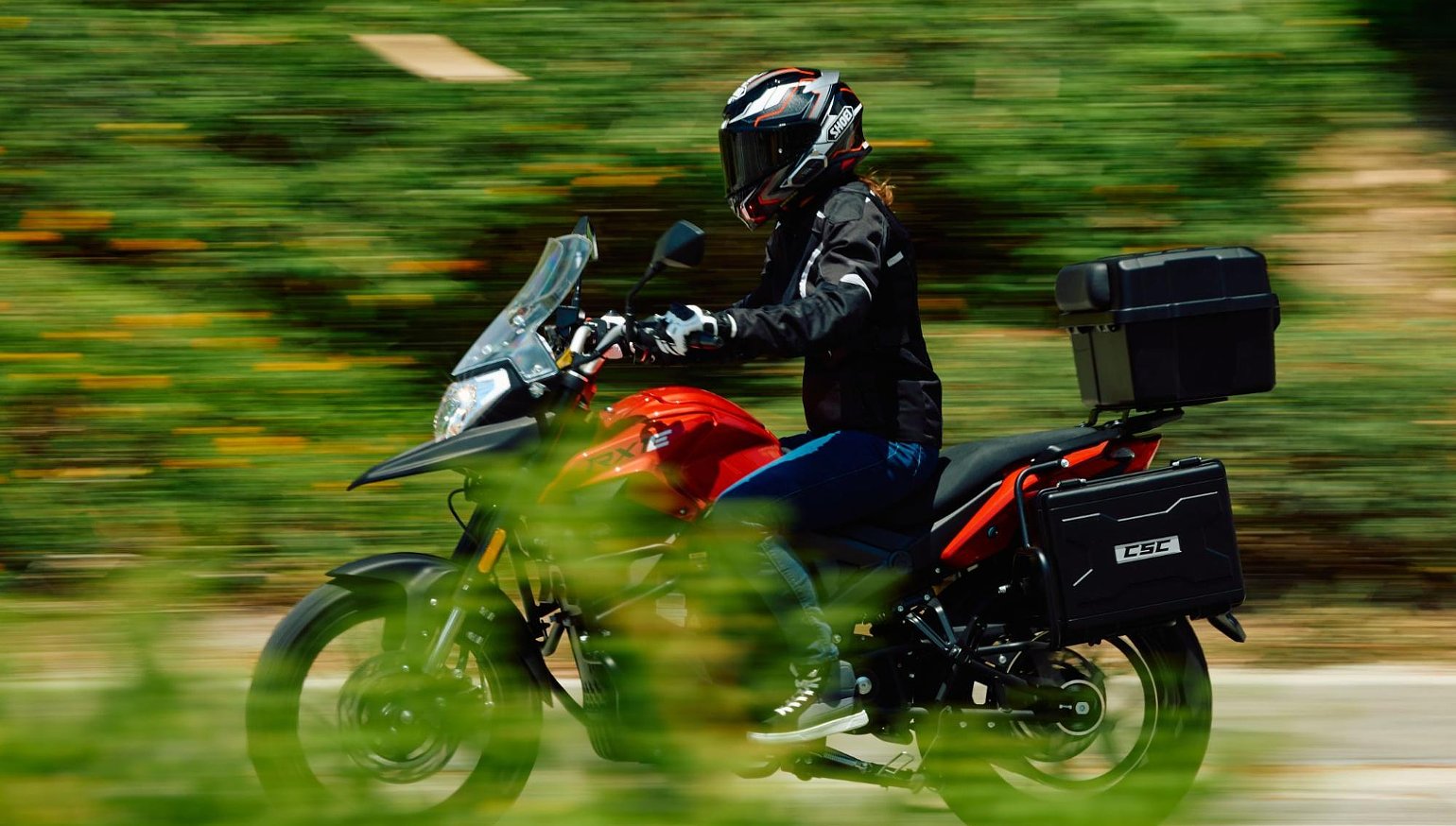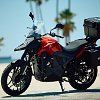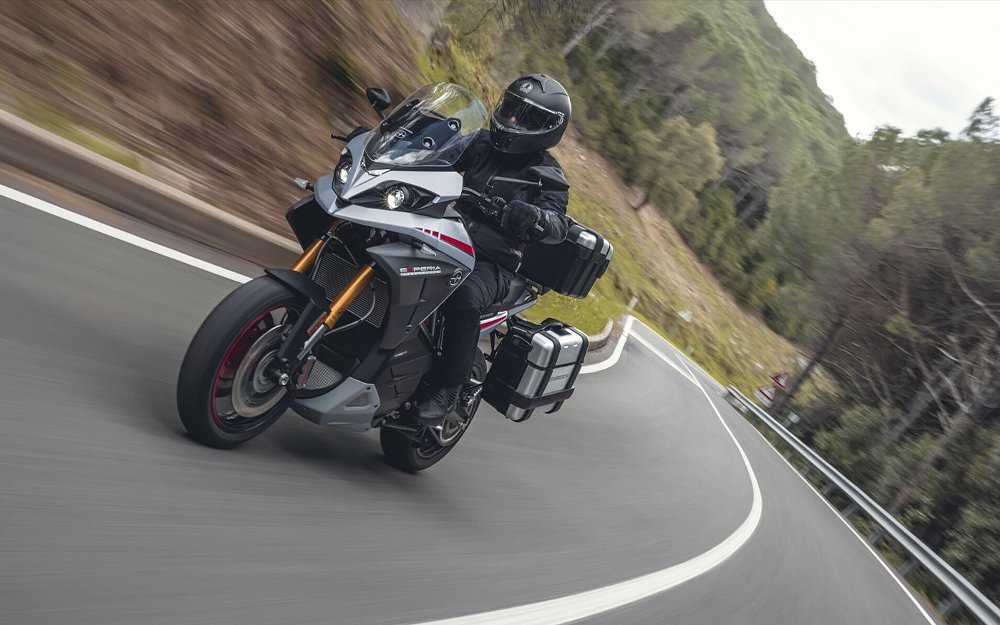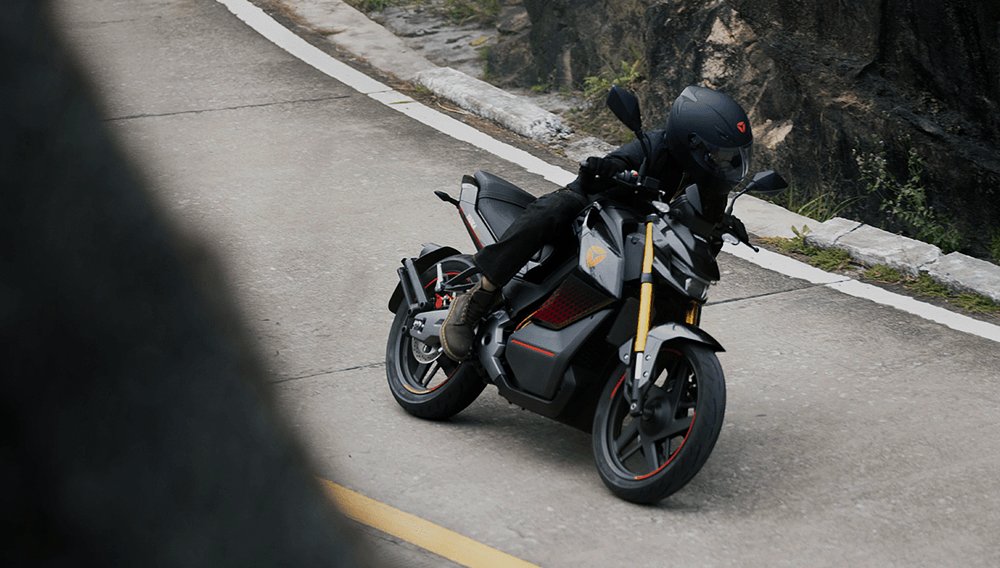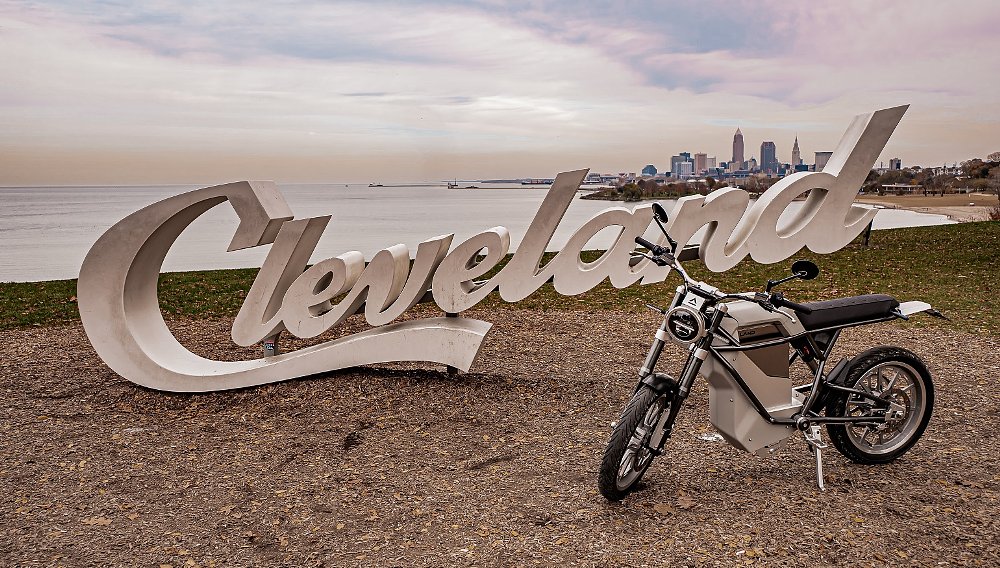A freeway-capable electric motorcycle for under $10,000? You read that right.
I was deep into researching our “Best Electric Motorcycles of 2023” when I stumbled upon the CSC RX1E. I didn’t trust my eyes either. The electric vehicle scene can be rife with smoke and mirrors. Too many tales have been told of vaporware companies bending the truth, making claims, and never delivering a single production unit.
Yet the RX1E looked legit and ready for sale on CSC’s website and a few e-mails later I was standing in the company's headquarters touching a production motorcycle in crimson metallic. It was real.

RX1E details
First, let’s set the record straight. In my “best of” article I claimed the RX1E was “ADV-inspired.” A vague claim open to interpretation, but the folks at CSC wanted to make it clear that the RX1E is a commuter at heart. Sure, it has plentiful panniers, crash bars, a centerstand, and a beakish front fender. These features may be considered hallmarks of an ADV bike here in the U.S.A, but I learned that in the emerging markets of Asia they are valuable add-ons for commuters dealing with much more rugged daily routes.
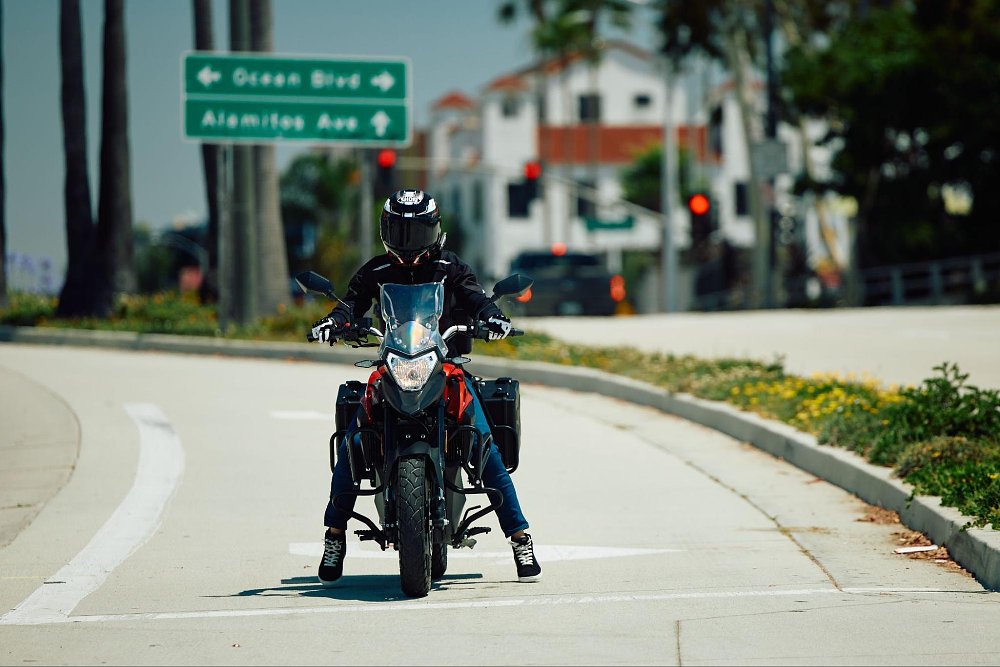
If commuting is the name of the game, then rider ergonomics and comfort are key. The riding position is fully upright with an easy reach to the handlebar and the foot pegs resemble mid-controls that put the knees in a relaxed orientation.
The seat height is an approachable 30.9 inches, but the RX1E does have some width to it, so the reach to the ground for me wasn’t quite flat footed. For my five-foot, four-inch frame and 31-inch inseam, I was just able to get the balls of my feet on the ground.
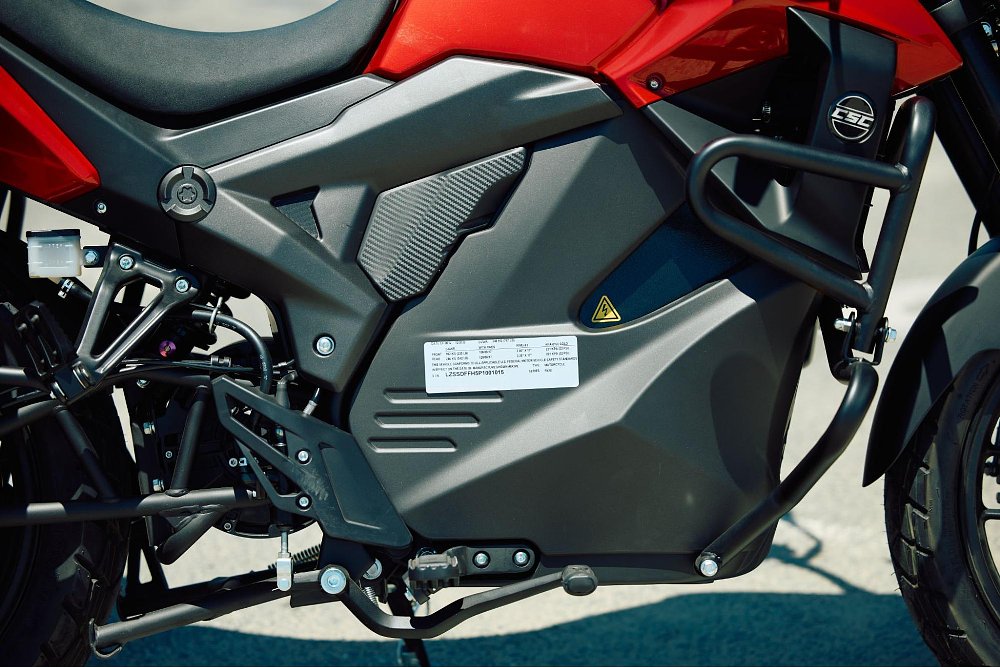
For riders who want to trade miles per gallon for miles per kilowatt-hour, the RX1E runs off a lithium ion 6.16 kWh battery and uses a central DC water-cooled permanent magnet motor to put those electrons into motion. It will take six hours to recharge an empty battery using a 110-volt outlet (Level 1). The charger can come with you on the go as it fits neatly in the panniers. Making a claimed 24 horsepower and 61.2 foot-pounds of torque, the RX1E isn’t the zippiest electric motorcycle on the scene, but to commute from A to B it will do the trick (as long as A and B are within mileage parameters; more on that soon).
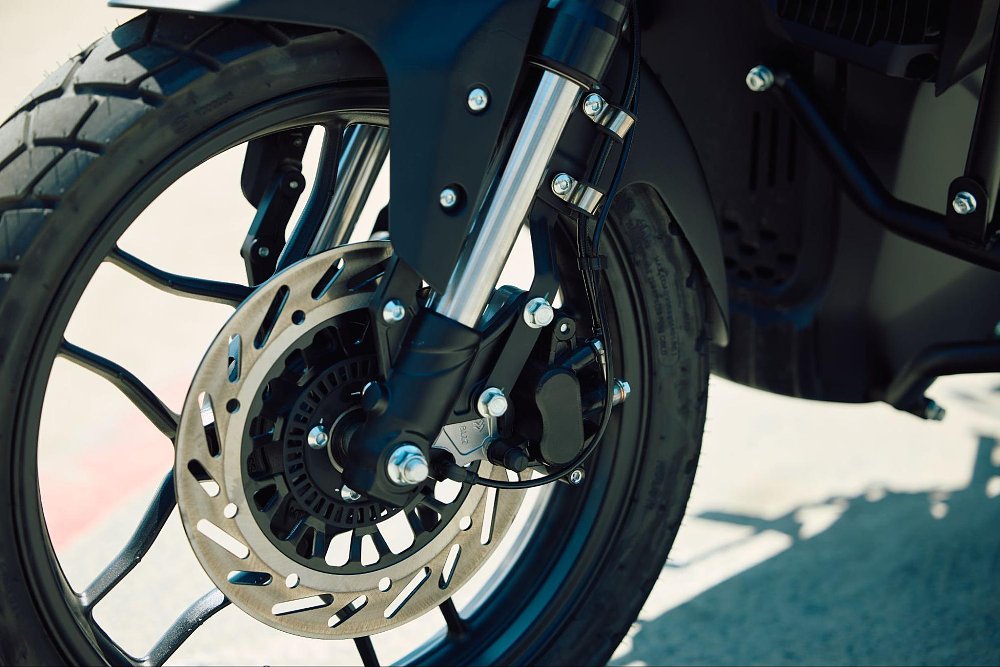
As for the more conventional chassis components, the RX1E admittedly puts an emphasis on budget over performance. No fancy brand-name parts here! For stopping power, the RX1E employs a 265 mm single disc rotor with a dual-piston caliper up front, and a 240 mm disc at the rear and both are ABS capable. As for the suspension, a 37 mm inverted fork with adjustable rebound damping and a monoshock with adjustable preload and rebound damping are tasked with absorbing the bumps on the road. A modest steel-tube frame holds it all together.
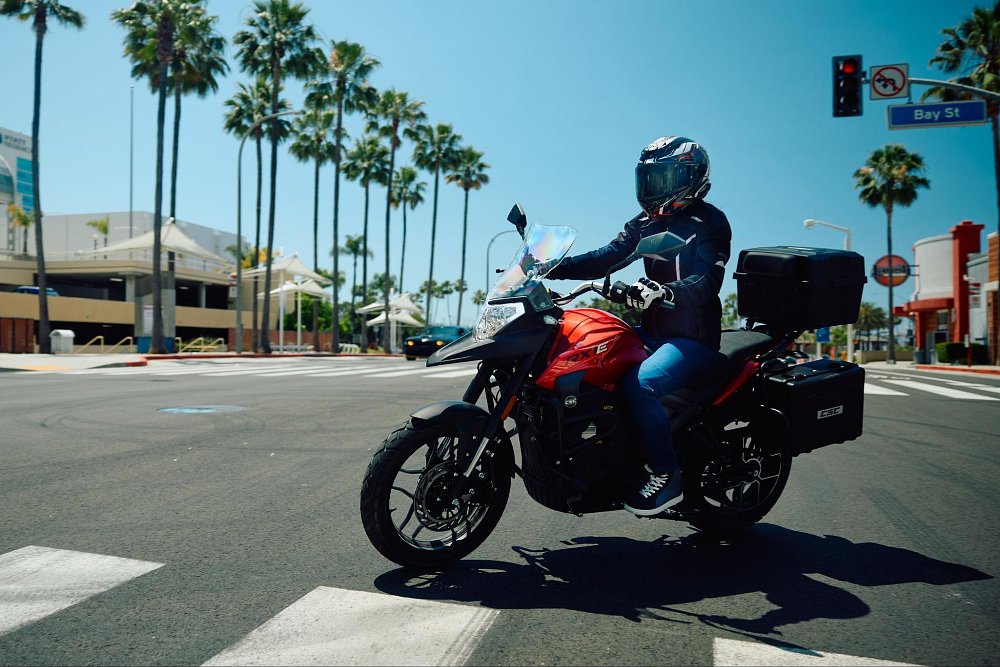
Onboard the RX1E
Information on the dash is critical when managing range with an electric vehicle. The RX1E has a clear battery life indicator with a numeric percentage display which helps take some of the guesswork out of the range equation. The dash also features an amperage meter, a fascinating data point I have not seen on many other e-motorcycles. A CSC representative told me that the purpose of the amperage meter is similar to the “instant mpg” readouts seen in most modern cars. Step on the gas hard in one of these vehicles, and the “instant mpg” relays the damage being done to the miles per gallon in real time on the dash. The amperage meter on the RX1E is meant to reflect a similar notion. The bar meter spikes as you crank further on the throttle, indicating a heavy load on the battery and reminding you that your ham fist is going to cost you some range. My experience with the amperage meter was a bit confusing, however, as the bar meter seemed to respond more to overall speed and not necessarily throttle demand. It is a novel feature but it’s debatable how useful it actually is to the rider.
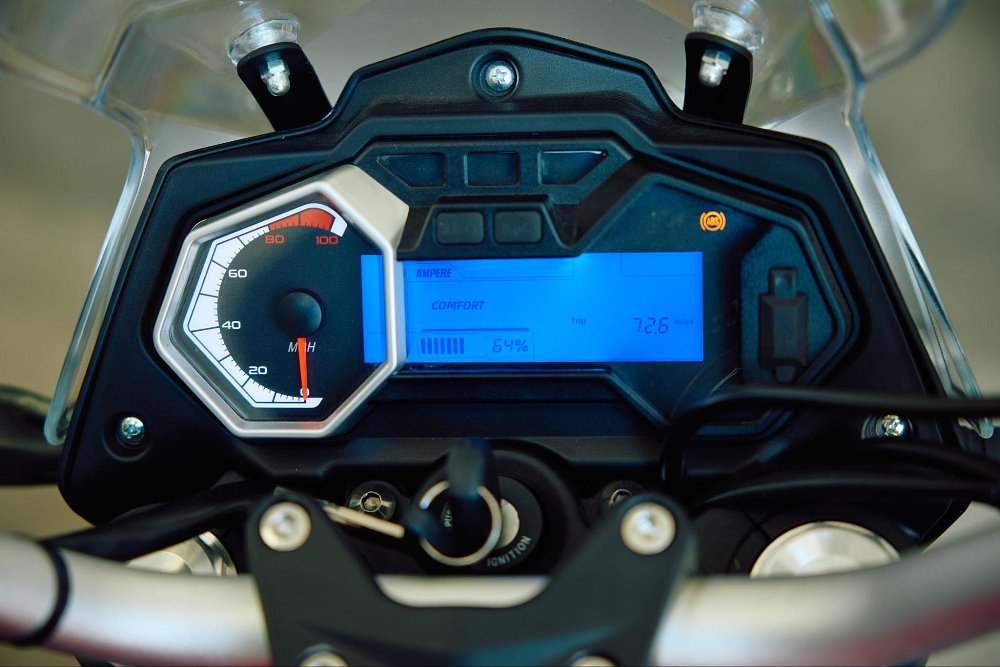
The three ride modes of the RX1E are truly distinguishable in their capabilities and functions. The Eco mode focuses on maximizing the mileage of the RX1E so it has a top speed of 45 mph and a tame power delivery. Comfort mode is the next step up, with a top speed of 65 mph and a subtle uptick in throttle response. The last mode is the Sport mode and it will deliver the most aggressive power response for the RX1E, along with its top speed of around 85 mph.
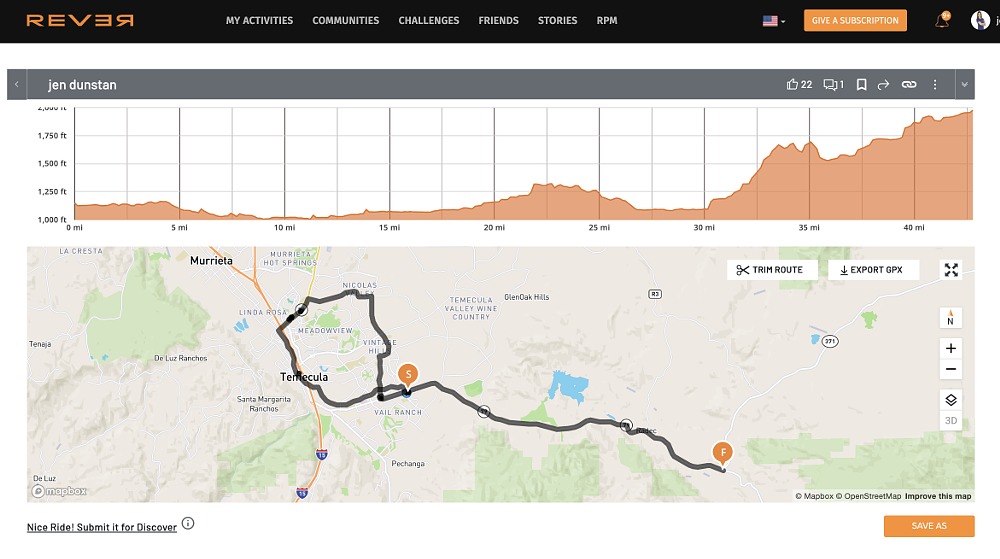
When I twisted the throttle, the RX1E had a long hesitation before rolling forward. I had initially chalked this up to an attribute of the Comfort mode, but discovered on the ride that the delay response was present in all modes. Electric motorcycles are often blamed for having too much of a “light switch” snap response in their throttles, but not so for the RX1E. It is reminiscent of a traditional clutch cable being too slack. Newer riders may appreciate this gentle throttle response as they fine tune the sensitivity of their right wrist, but riders accustomed to immediate throttle responses will be vexed by it.
Incidentally, all the ride modes also shared the noticeable lack of any engine braking effect. The RX1E kept coasting even after a severe chop of the throttle. The CSC website makes no mention of regenerative braking, which is a feature other electric vehicles often make use of to not only mimic the feel of engine braking, but also to recapture precious percentage points of charge for the battery. This came to play an important role in the overall braking performance of the RX1E.
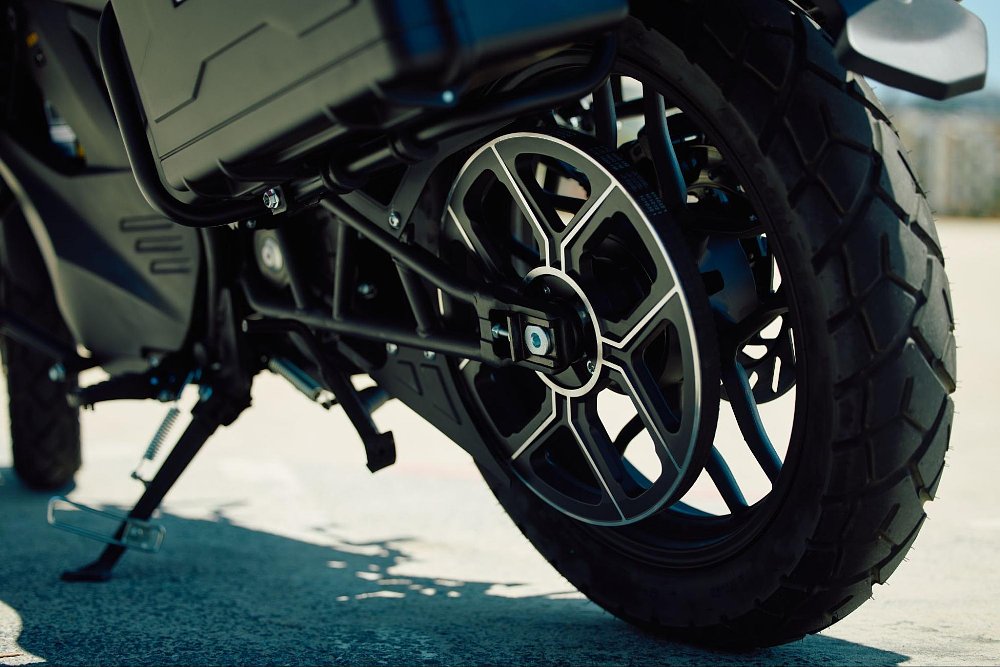
Once in motion, the RX1E is the most silent electric motorcycle I have encountered yet. Of course all EVs are quiet, but other bikes I have ridden have had the sound of a chain drive, or the whine from the electric motor. Not so with the RX1E. The vibration of the tires on asphalt and wind noise in my helmet were the only real audible clues of velocity.
For the commuter dealing with stop-and-go traffic, there is plenty to appreciate about an electric bike. No stalling at stop lights, never a missed shift or wrong gear selection, no overheating, and a low center of gravity, thanks to a battery pack down low as opposed to a gas tank carried up high. The RX1E makes good on all of these promises and I had no trouble navigating the flow of busy boulevards and tight city streets on the commute.
A few things do stand in the way of proclaiming the RX1E as a top commuter, however. For instance: the brakes. The 265 mm single disc up front is on the smaller side for a bike of this weight (469 pounds), and its weakness is only exacerbated by the absence of engine braking from the electric motor. I relied on early and heavy application of both brakes as a default to overcome the lack of stopping power. The suspension was also lacking. Every pebble, tar snake, and bump in the road was keenly felt in the handlebar and seat. There is a possibility of adjusting the rebound damping at the front and rear, but this wouldn’t be a complete solution to the lack of plushness I’d want in a commuter that will eventually hit all manner of potholes.
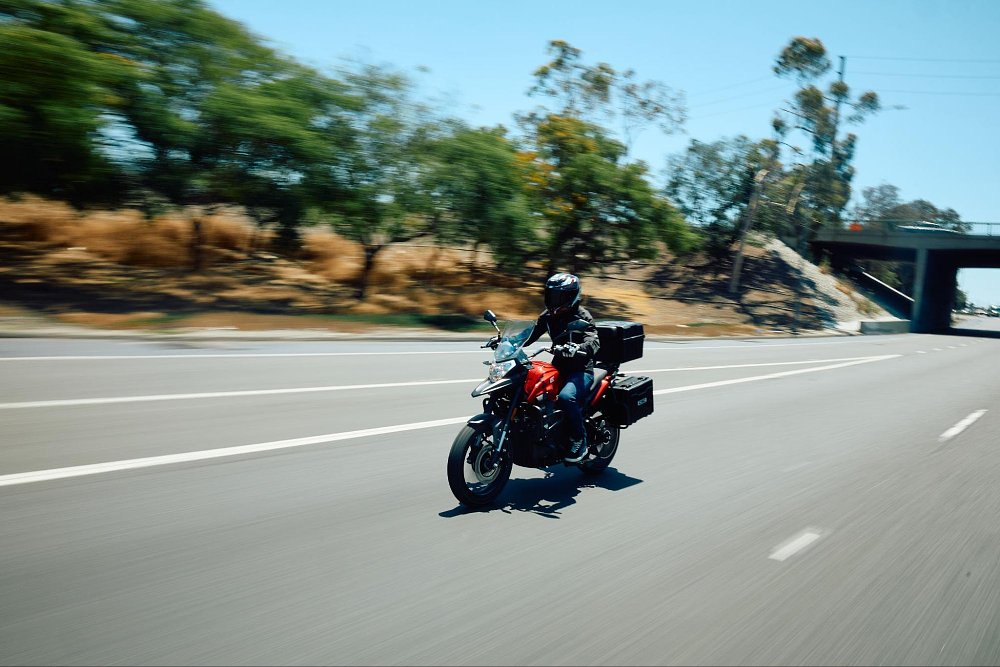
I toggled into the Sport mode for the faster roads of my ride to simulate the stresses of the freeway. As advertised, the RX1E is good for those freeway speeds of 65 mph and up. Watching the rapid decline of each percentage point on the battery gauge tempered my excitement on the throttle, though. Uphill climbs also revealed a weak point of power output, because even at full stick the powertrain of the RX1E was clearly taxed and top speeds drastically reduced by the fight against gravity. I ended up limping the RX1E home in Eco mode, which is as anemic as expected but it got the job done as I rolled into my garage with just three percent of the battery left to spare.
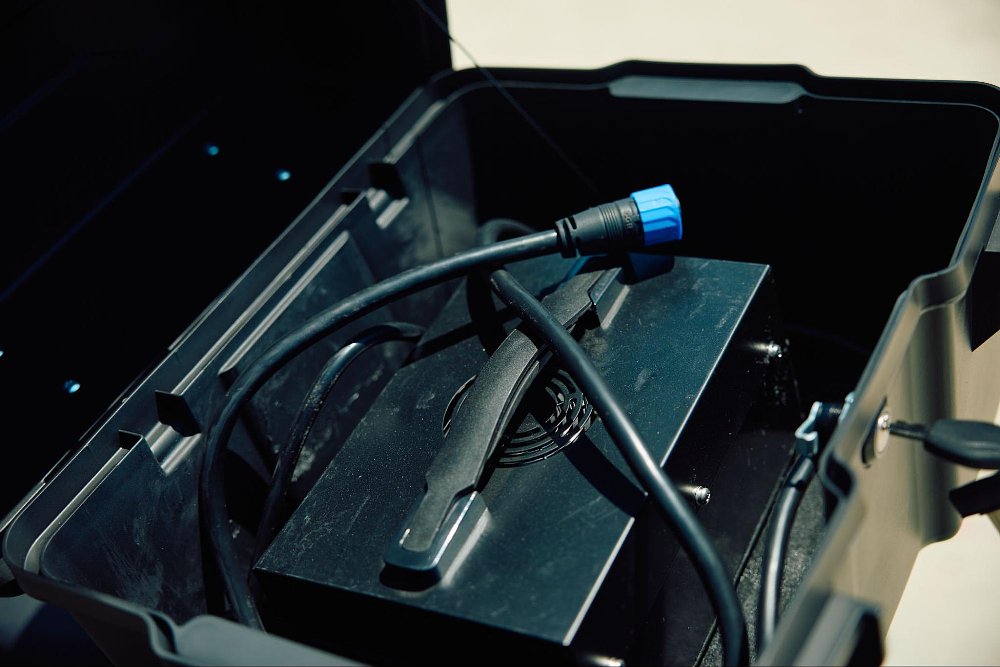
This is the real deal maker or breaker for the RX1E. The CSC website claims 112 miles according to the New European Driving Cycle standard (a standard that's often criticized for unrepeatable figures outside of the laboratory and has since been replaced with the WLTP test in Europe). In my real-world test, the RX1E barely made it 42.9 miles on a single charge. When I spoke with CSC representatives, they said they had logged 60- to 80-mile test rides on their own, but mostly at the low speeds of the congested byways of Los Angeles. I will admit my route included spurts of high speeds, and some serious elevation climbing at the end, but the result was still surprising. Riders considering the RX1E as a daily commuter should add in a generous buffer as the true range may not live up to the laboratory test results.
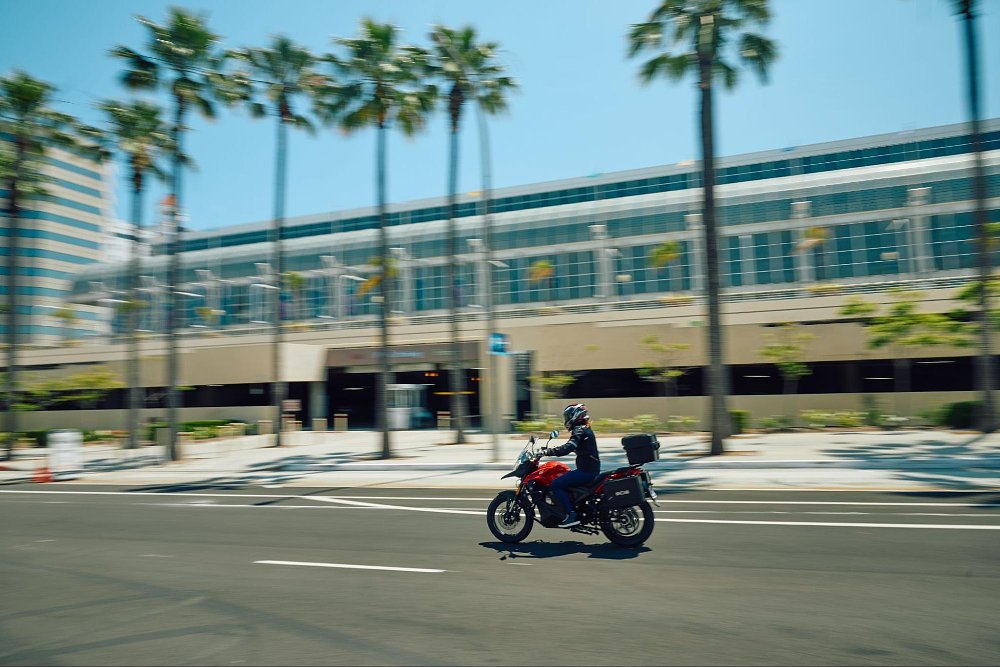
Economy versus passion
The RX1E is a motorcycle for those who prioritize the convenience and economy of an EV for the daily run around. In my imagination, this person is someone who has a formulaic route to the workplace that is predominantly a city street commute, and they have the capability of plugging in and charging during their eight-hour work day. This theoretical commuter will enjoy “going green” by ditching the gas station and most of the maintenance headaches traditional motorcycles are known for. It truly is an easy plug-in-and-ride e-motorcycle.

The die-hard motorcycle enthusiast, however, may be less pleased with what the RX1E has to offer. The performance of the electric powertrain is nothing close to the more expensive Zero or LiveWire models, and the budget components provide a less inspired riding experience. Pile on top of that a range that is difficult to predict and the RX1E has really relegated itself into the commuter utility category. If you are looking to ride a machine with passion and personality for your daily commute or long weekend cruises, you might need to look elsewhere.
At $8,495, this is one of the cheapest full-size electric motorcycles out there that meets freeway speeds and most of the needs of a city commuter. An ADV bike it is assuredly not. You ultimately get what you pay for — an affordable ride that comes at the expense of scaling back performance. That sliding scale is different for everyone, but for this rider, it’s a nudge too far in the “economical” direction.
| 2023 CSC RX1E | |
|---|---|
| Price (MSRP) | $8,495 |
| Motor | DC water-cooled permanent magnet motor with 18 kw max power |
|
Transmission, final drive |
Direct drive, belt |
| Claimed horsepower | 24 |
| Claimed torque | 61.2 foot-pounds |
| Frame | Tubular-steel |
| Front suspension |
37 mm inverted fork, adjustable rebound damping; 4.7 inches of travel
|
| Rear suspension | Monoshock adjustable for preload and rebound damping; 4.3 inches of travel |
| Front brake | Two-piston caliper, 265 mm disc with ABS |
| Rear brake | Single-piston caliper, 240 mm disc with ABS |
| Wheelbase | 55.0 inches |
| Rake, trail | 27 degrees, 2.9 inches |
| Seat height | 30.9 inches |
| Claimed range | 112 miles based on New European Driving Cycle (NEDC) |
| Claimed battery capacity | 6.16 kWh |
| Claimed charge time | Six hours at Level 1 (household 110V) |
| Tires | 100/80-17 front; 120/80-17 rear |
| Claimed weight | 469 pounds |
| Available | Now |
| More info | CSCmotorcycles.com |




